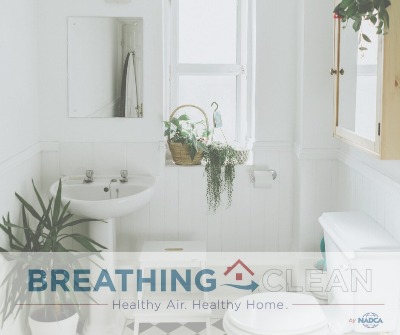Mold: Is Your Home at Risk?
Did you know that September is Mold Awareness Month? As a homeowner, it’s important to be familiar with the signs and symptoms of mold presence. Undetected or ignored mold growth can turn into a serious issue, not only for the structure of your home but for the health of those living under its roof. Reduce your risk by knowing the signs of mold to keep your home and family healthy.
Signs of Mold
Just because you can’t see it, doesn’t mean it’s not there. If any of these signs appear in your home, it may be an indicator that mold is lurking somewhere nearby.
1.) Water
Although mold and its spores are everywhere, active mold growth requires moisture. Whether on visible surfaces or hiding behind drywall, in attics, or under carpets, indoor mold grows in the presence of excessive dampness or water.
2.) Humidity and Condensation
Humidity or water vapor in the air can sometimes supply enough moisture for mold to thrive and grow. If your home feels humid, or you notice an abundance of condensation, that is a prime environment for mold. The EPA recommends that indoor relative humidity should be kept below 60 percent, ideally between 30 percent and 50 percent, if possible. Use a hygrometer to easily measure humidity and if your home is outside the ideal range, there are several steps you can take to get that moisture under control:
- Install vent fans in kitchens and bathrooms.
- Seal air and duct leaks (be sure to clean your ducts before sealing).
- Select houseplants that absorb moisture from the air, such as Boston ferns.
- Keep air-conditioning drip pans and drain lines clean and unobstructed.

3.) Odor
Is there a strange, earthy smell in your home that won’t go away, no matter how much air freshener you spray? Mold may be at the root of the issue. Microbial Volatile Organic Compounds (MVOCs) are gases produced by mold. The musty odor that you smell from mold is caused by MVOCs. These odors are chemicals that are produced by molds during parts of the mold's growth cycle.
4.) Health problems
Mold allergy symptoms are very similar to the symptoms of other allergies. Mold triggered allergy symptoms include:
- sneezing
- runny or stuffy nose
- itchy throat or ears
- hives
- swollen or itchy eyes
- coughing, wheezing, or difficulty breathing
If you suffer from asthma or other respiratory problems, the presence of mold in your home can be increasingly bothersome. Exposure to indoor mold has been known to aggravate asthma symptoms especially in children and the elderly. Length of exposure may also dictate the severity and duration of mold-related allergy symptoms.
How to Prevent Mold Growth
Knowing the signs of mold in your home is important, but what if you can prevent the growth of mold altogether? Here are just a few things you can do to stop mold in its tracks:
- Prevent leaks and regularly monitor your home for water damage.
- Remove any standing water or any water damaged furniture and carpets.
- Combat humidity by using dehumidifiers to help remove excess moisture from the air.
- Run your bathroom’s fan while showering.
- Prevent moisture with proper ventilation.
- Equip your home with mold-resistant products, such as mold-resistant paints and sealants.
- Get your air ducts cleaned to increase air circulation within your home and prevent the spreading of mold.
Reduce Your Risk with Air Duct Cleaning
In general, prevention is key when it comes to dealing with mold. Along with running a dehumidifier and increasing the airflow within your home, consider scheduling an air duct inspection and cleaning to help ensure no mold is hidden in your home’s ductwork. To get the job done right the first time, hire a company who is a member of the National Air Duct Cleaners Association (NADCA) NADCA members have advanced training and follow a higher standard in cleaning and customer service. They can evaluate your air ducts for mold growth and recommend the necessary steps to remedy the issue. Use NADCA’s Find a Professional Directory to locate a NADCA member near you.
Click Here to Find a NADCA Member Near You
